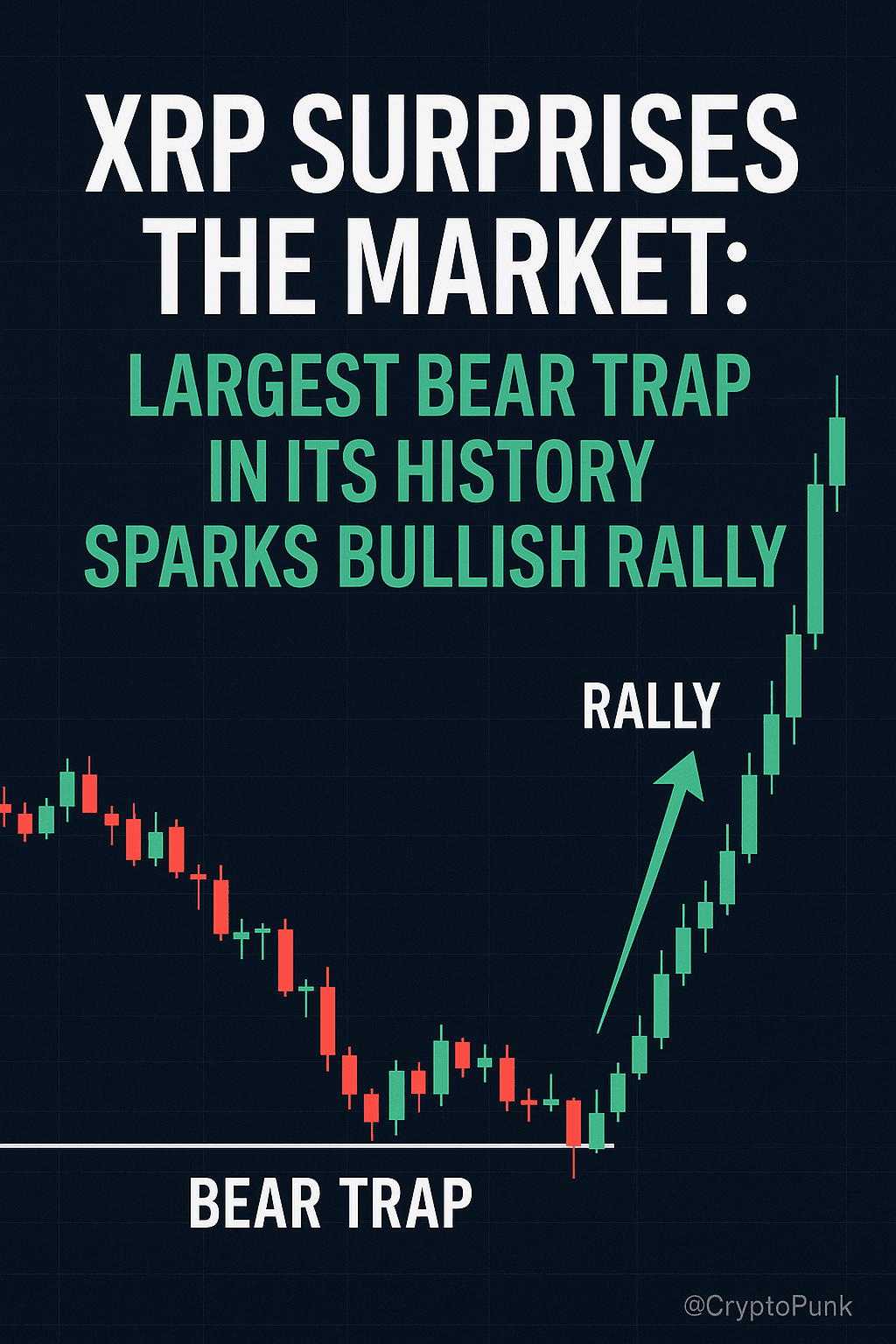
Let me provide an analysis based on the available information, focusing on the current context of XRP:
What is a bear trap? A bear trap occurs when the price of an asset declines sharply, prompting traders to sell in fear of further losses, but the price quickly rebounds, resulting in losses for those who sold and gains for buyers at the bottom. In the context of XRP, this could be attributed to high market volatility or specific news impacting sentiment.
Current Situation of XRP:
Recent Price Performance: According to available information, XRP has seen significant gains recently, with its market value exceeding $137 billion after a 15% rise in one day, becoming the third-largest cryptocurrency following Donald Trump's victory in the U.S. presidential election in November 2024. The price reached around $2.50, compared to under $0.60 before the election.
Recent Volatility: There are posts on platform X indicating a sharp decline in the value of XRP by more than 20% over two days, causing significant losses for some traders (such as a $100,000 loss for one user).
This decline may be related to the actions of major investors (such as Chris Larsen, the co-founder of Ripple, who sold nearly $200 million of XRP), which could ignite a bear trap if followed by a price rebound.
Market Analysis: Experts' forecasts indicate that XRP is currently trading around the $2.17-$2.43 level, with strong support at $1.90 and resistance at $2.85-$3.00.
If a sharp decline occurs to support levels (such as $1.90 or $1.70) followed by a rapid rebound, it can be considered a bear trap. Is it the "largest bear trap in history"?
Lack of Conclusive Evidence: There is no data in available sources confirming that XRP recorded the largest bear trap in cryptocurrency history.
This statement may be exaggerated or a common rumor circulating on platforms like X, especially with posts indicating significant volatility and suspicious actions from major investors. Historical Context: XRP has experienced significant volatility in the past, such as rising to $3.28 in January 2018 and then falling by 82.26% by the end of the year.
Such movements can resemble bear traps, but labeling them as the 'largest in history' requires specific data on the size of the decline, the number of affected traders, and the subsequent rebound.
Influencing Factors:
Whale Actions: Large sales of XRP by figures like Chris Larsen can cause a temporary drop in price, igniting a bear trap if followed by institutional buying or a rebound supported by positive news (such as the resolution of the Ripple case with the SEC).
Legal Case: Developments in the case between Ripple and the SEC, especially with expectations to be resolved in July 2025, could be a catalyst for significant price volatility, supporting the likelihood of a bear trap.
Market Sentiment: Trump's victory and his pledge to support cryptocurrencies have boosted optimism around XRP, potentially leading to rapid rebounds after declines.
Analysis and Predictions: Potential Scenario: If there has been a sharp recent decline (such as the 20% drop mentioned in X posts), it could be due to selling by whales or a price correction after the significant rise in November 2024.
A rapid rebound to levels like $2.85 or $3.00 could confirm a bear trap, especially if coinciding with positive news such as the resolution of the SEC case or increased adoption of RippleNet.
Risks: High volatility in the cryptocurrency market makes XRP susceptible to bear traps, but investors should set stop-loss orders (such as $1.70) to mitigate risks.
Ripple's control over 55 billion units of XRP (about 55% of the supply) could affect market dynamics and raise suspicions about manipulation.
Recommendations: Closely monitor support levels ($1.90-$2.00) and resistance ($2.85-$3.00).
Follow news related to the SEC case and actions of major investors.
Avoid making decisions based on panic, as bear traps rely on exploiting emotional reactions.
Summary: Although there is no conclusive evidence that XRP recorded the "largest bear trap in history", recent volatility, whale actions, and legal developments suggest the possibility of a significant bear trap if a sharp decline is followed by a rapid rebound.
Traders are advised to exercise caution, use risk management tools, and closely follow the news. If you are referring to a specific event or have additional details (such as a specific date or the size of the decline), share them so I can provide a more accurate analysis.#BiananceSquare #Write2Earn $XRP $DOGE